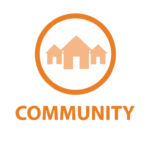
Child Abuse and Neglect
Community and Family (Cross Age)
Note
*: Statistically unstable
HHSA Regions: Health and Human Services Agency regions
Data not available:
Gender, Male from 2017 to 2019
Race-Ethnicity, Missing category data are excluded from rate calculation.
For the zip code map data, numbers are censored and rates are not calculated when the number of events is fewer than 10.
Race-Ethnicity categories:
Latino, Nat Amer, Asian/P.I., Black, White, Multi-Race
Sources:
Overall, Gender, Age Group, and Race-Ethnicity:
Rates are based on unduplicated counts of children–at state and county level– during the time period.
Data Source: CWS/CMS 2023 Quarter 4 Extract.
2000-2009 – CA Dept. of Finance: 2000-2010 – Estimates of Race/Hispanics Population with Age & Gender Detail.
2010-2019 – CA Dept. of Finance: 2010-2060 – Pop. Projections by Race/Ethnicity, Detailed Age, & Gender.
2020-2023 – CA Dept. of Finance: 2020-2060 – Pop. Projections by Race/Ethnicity, Detailed Age, & Gender.
Program version: 2.00 Database version: 7899EDF5
San Diego County HHSA Region:
It summaries of all children (Age 0-17) who had a substantiated referral in the given year, received to Child Welfare Services (currently Child and Family Well-Being). Children are only counted once in each year. The first substantiated referral during the report period was used to identify each child’s zip code. It is possible that the child was part of other substantiated referrals from other zip codes.
Business Intelligence queries of CWS/CMS (Child Welfare Services/Case Management System); Extract Date: 4/18/2024.
Prepared by: County of San Diego, Child and Family Well-Being | Office of Administration/Policy – Data Unit
Thomas Brothers Maps. “Zip_Code.zip” SanGIS, Thomas Brothers Maps, SanGIS JPA members and associated agencies. 2023-10-02. San Diego Geographic Information Source – JPA. 2024-08-05 https://rdw.sandag.org/Account/gisdtview?dir=Miscellaneous.
Allegation Type:
A child is counted only once, in category of highest severity.
Data Source: CWS/CMS 2023 Quarter 4 Extract.
Program version: 2013.12.05 Database version: 78964D6F
Other Includes exploitation, caretaker absence/incapacity, substantial risk, and missing.
What is the indicator?
This indicator—the rate of substantiated cases of child abuse and neglect per 1,000 children ages 0-17—shows the trend in reports of child abuse and neglect that are found through investigation to have sufficient evidence to warrant a child welfare services case being opened or having the family referred for services. These data come from reports filed by the County of San Diego Health and Human Services Agency to a statewide database managed by the University of California Berkeley.
Why is this important?
Child abuse and neglect have profound and long-lasting impacts on a child’s physical, mental, cognitive, and emotional development. Physically, it can result in injury, disability, or even death. Psychologically, it can lead to depression, anger, anxiety, self-harm behaviors, and aggression. Research indicates that abused or neglected children often face social and behavioral issues and are less likely to succeed academically. Studies on Adverse Childhood Experiences (ACEs) reveal that child abuse and neglect can have lifelong effects on health and well-being, including a higher risk of heart disease, obesity, and depression in adulthood.
What strategies can make a difference?
These evidence-based strategies are used across the country to address child abuse and neglect:
- Deliver interventions aimed at enhancing parent-child relationships (i.e. Functional Family Therapy, Parent Child Interaction Therapy) , fostering positive parenting skills (i.e. Healthy Families America), addressing basic needs, and bolstering social support networks for families facing heightened risks.
- Employ evidence-based parenting courses and support groups to impart age-appropriate communication techniques and positive disciplinary methods from infancy onwards.
- Provide training to healthcare professionals, educators, and other caregivers to identify signs of abuse and neglect, alongside offering information on available community resources.
- Implement trauma-informed approaches within the realms of healthcare, child welfare, mental health, and justice systems to mitigate multi-generational abuse.
- Introduce the Positive Parenting Program (Triple-P), recognized for its efficacy in preventing childhood social-emotional and behavioral issues as well as instances of child maltreatment.
Resources and organizations addressing child abuse and neglect
- Child and Family Well-Being Department, San Diego County
- County of San Diego: Moving Toward a Comprehensive Prevention Plan
- Youth and Family Services, YMCA San Diego
- Positive Parenting Program, Jewish Family Services
- Child Well-Being, Youth Development, Family Wellness and Community Engagement, SBCS
- 211 San Diego